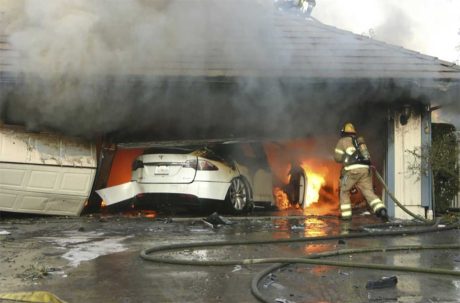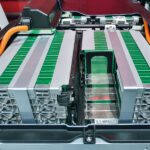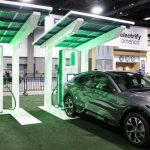
By Dexter Liu
USA – Did anyone tell you — should you be contemplating buying an Electric Vehicle — that, NO, you are not saving the planet any more or less than if you continued to drive that gasoline car?
In fact, you will continue to have a role in carbon production while driving electric. That’s because EV charging stations are plugged into the power grid (off-the-grid chargers are powered by diesel generators). Nationally, less than 3 percent of all power consumed in America comes from wind and solar combined.
And yes, our electric power grid… drum roll, please…is still overwhelmingly powered by fossil fuels! So, the more government imposes the so called “zero emissions” ruse, the more our power grid will become overstretched and overtaxed (in more ways than one) driving up the cost of electric production for everything! All while still contributing to carbon emissions.
Furthermore, if one is contemplating embracing the EV mode of transportation, you need to know the “human costs” in its production supply chain. Did you know for example, most of the cobalt, a critical raw material in EV manufacturing, comes from mining in Africa?
In fact, 60 percent of the world’s cobalt supply comes from the Democratic Republic of Congo where much of the mining is done with child labor working in extremely harsh and dangerous conditions. Also consider the harmful environmental impact mining cobalt imposes on the communities in which they live. Also, did you know that Russia is among the top five largest global suppliers of nickel? It’s another critical raw material for the production of EVs. Given the horrific war in Ukraine and the resulting war crimes, you may draw your own conclusions as to the morality and/or the wisdom of enriching Putin in buying nickel from Russia.
The mining of lithium, another necessary raw material to produce lithium-ion batteries, is also controversial. You don’t hear much about it because most of it comes out of South America and Australia. However, the industry has plans to mine lithium in Nevada to create a domestic source. This is drawing fire, ironically from environmentalists, the very people pushing for our electrified transportation future. The truth is mining for lithium is harmful to the region as it may contaminate the groundwater among other environmental hazards.
This is particularly ironic when you consider the greatest champion of our EV future, the Biden administration, lectures us on the evils of fracking for natural gas yet they’re perfectly fine with mining for lithium and cobalt because of the EV supply chain which they condone.
There is tremendous use of fossil fuel energy both in mining and the manufacturing of Evs. Can you say, “hypocrisy?” Then there’s the issue of the disposal of spent EV batteries, a hazardous waste, and recycling isn’t a real option because it is not economically viable. And even once re-purposed can only be used in a much-diminished capacity and no longer usable for electric cars. There is currently no real viable market and disposal remains a serious problem.
A main challenge in the design of the EV battery is to isolate them from the risk of damage from the elements like weather, road debris, etc. while thermodynamically allowing them to “breathe” and to cool properly so they function reliably and not catch fire. Current designs use a synthetic material called polytetrafluoroethylene or “ePTFE,” a cousin of a material originally developed by Dupont to coat cooking ware, Teflon.
Batteries are enclosed in a critically designed ePTFE wrap, which keeps the elements out while allowing batteries to cool and vent. Occasionally, the batteries overheat, however, and the rising temperature spirals out of control resulting in a dangerous condition called “thermal runaway” igniting a fire that is difficult to suppress by common firefighting techniques.
Batteries with a residual high voltage charge is another dangerous hazard for those fighting these fires. A lithium-ion battery fire can also unexpectedly reignite creating unusual challenges in addition. In rare situations the thermal runaway event may even cause an explosion when there are trapped gases. The National Transportation Safety Board has been monitoring numerous incidents across the country of fires due to EV batteries and provides guidance on EV battery fire mitigation (Google: “NTSB on EV fires”).
Related posts:

Dexter is a frequent contributor to the County Compass.




















































